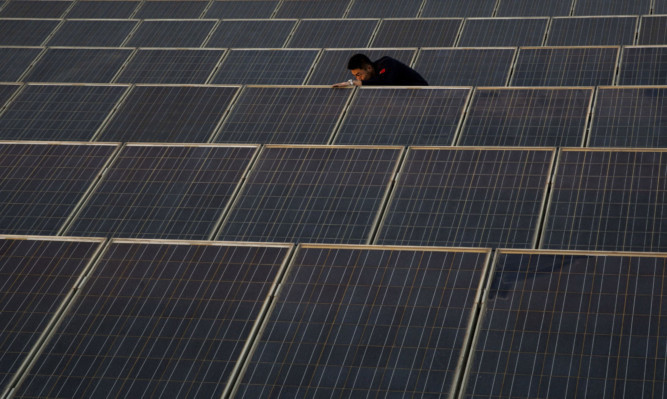One of Scotland’s largest solar energy farms has been given planning permission in Angus.
Powering 5,000 homes, the East Ballochy scheme between Brechin and Montrose will stretch across 153 acres.
And it will come in at just under the wattage of Tayside’s first major solar farm in the Carse of Gowrie.
The 100-acre green field site was identified as an ideal spot for the installation of 70,000 free-standing, static solar PV panels, which would generate enough power for 5,500 homes.
The application, on behalf of the Stracathro and Careston Estate, was approved by delegated decision yesterday.
The site lies within the elevated area of Muir of Pert in the lower South and North Esk valley, three miles north-east of Brechin and two miles north-west of Montrose.
Associates Borealis Energy said the “relatively remote location” would be an “ideal” place for development.
A spokesman said: “Stracathro and Careston Estates working with Borealis Energy has engaged directly and proactively with local residents on the estate and in the area surrounding the site.
“All of the residents neighbouring the site or the farm access track have been consulted directly on a one-to-one basis, in most cases with a meeting, and in the remainder with a phone call.
No objections were made to the application, allowing for council officers to grant approval without recourse to Angus Council’s development standards committee.
The area of land on which the site lies separates the A90 to the north and Montrose Basin to the south.
The site consists of arable and grazing land, with a farm track providing access, and is surrounded by either agricultural land or plantation and broad leaved woodland in the form of Glen Wood and Glenskinno Wood to the east and Bruce Dam Wood to the west.
Solar Trade Association spokesman James Beard said: “A solar farm, if it’s well positioned and well screened, is an asset. It’s all about how well planned it is.”
Scotland already has 116 megawatts of solar capacity from more than 31,000 installations, mostly panels on the roofs of peoples’ homes.
Solar farms are arrays of photovoltaic (PV) panels installed on the ground and designed to capture the sun’s radiation and turn it into electricity.
According to the solar industry, just one hectare of panels can produce enough electricity to power up to 150 homes.
